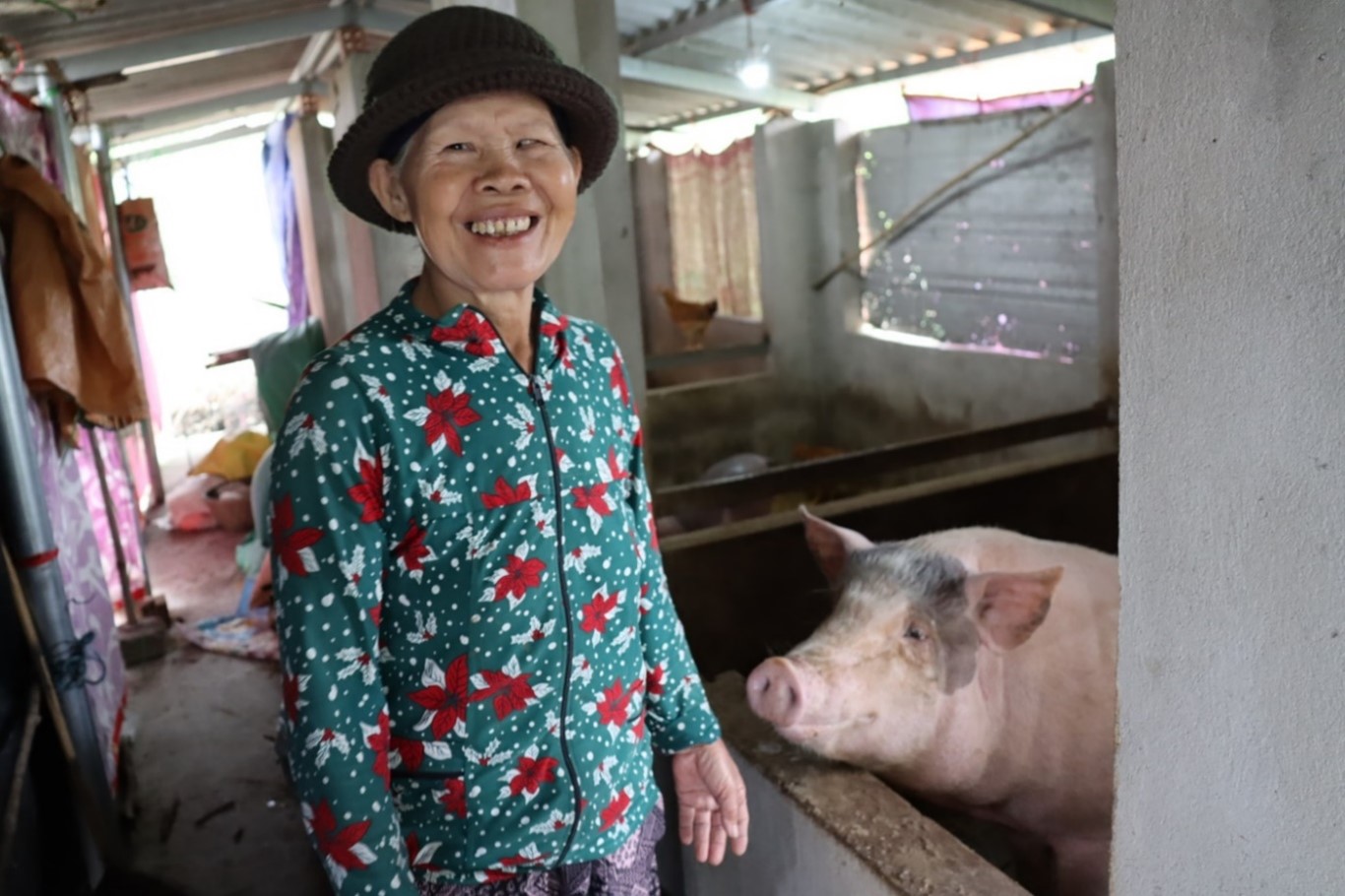
When Quang Tri Province, in central Viet Nam, suffered its worst flooding in decades in October 2020, many families were devastated. Among them was Tran Thi Quyt, a blind 60-year-old and the main breadwinner for her family of four people with disabilities. She lost all her poultry and income.
Thanks to a gender assessment, and new disaggregated data on vulnerable groups, UN Women was able to provide emergency cash grants of VND 4 million (173 USD) to 315 vulnerable and flood-affected women-headed households to rebuild their livelihoods.
Quyt used the grant to buy livestock, seeds and fertilizer and received training on how to farm after a flood and improve their production. “I will use the money earned from selling the pigs and vegetables to build a new room for my elder son so he can get married,” says Quyt.
Climate-change-related effects, such as droughts, temperature changes and flooding, affect women and girls disproportionately. According to UN Women’s new empirical analysis of geospatial and survey data, these events are associated with a higher likelihood of child marriage, adolescent births and violence against women, as well as increased unpaid work burdens for water and fuel collection.
Viet Nam’s southern Ca Mau Province has suffered repeated droughts. Pham Thi Nhu Y, a 36-year-old mother of two in Khanh An Commune, was one of 500 households that received a water tank in 2019. It was provided under a joint UN Women project with the Food and Agriculture Organization and Save the Children focused on forecast-based early actions to reduce disaster risks.
“The project provided the water tanks and guided us on how to act early, before the drought season, which we had not known before,” says a grateful Nhu Y. “Now that we know, we can reduce the losses, then overcome them. Lots of women have already gotten out of poverty!”
These initiatives helping women forestall the impacts of environmental disasters and climate change can be scaled up and targeted when there is proper data driving them.
“We can’t help everyone so we need information on the most vulnerable,” explains Thuy Anh Tran, Programme Analyst at UN Women Viet Nam. “If we have better data on access to water in poor households, we can have more targeted programming related to that. With better data, we can also do better advocacy, with more targeted messages to the Government.”
UN Women has supported Viet Nam’s Disaster Management Authority, housed under the Ministry of Agriculture, as well as the General Statistics Office, to collect sex, age and disability disaggregated data to feed a new online system to monitor disaster indicators and other development indicators.
Viet Nam has also received support since 2019 from the Woman Count programme, which will expand its support from 2022 onwards to boost production of climate change data. Tran says having such data will improve relief planning and responses.
Gender-environment data gaps
Traditionally, environment statistics have been largely gender-neutral and gender-related environment statistics have yet to be collected by most national statistical systems. Furthermore, only a handful of the Sustainable Development Goal (SDG) indicators explicitly measure this, and the indicators in the Sendai Monitoring Framework are not well suited to capture most gender concerns in the context of disasters and climate change.
To better understand this nexus, UN Women, UN ESCAP, UN Environment and the International Union for Conservation of Nature have proposed a set of 46 environment-gender indicators to capture issues relevant for Asia-Pacific countries. Since then, this set has been expanded.
Dedicated surveys
In 2021, UN Women created a model questionnaire for survey data collection, for countries to generate more than 100 indicators on gender and the environment. The questionnaire was piloted in select climate-prone provinces in Bangladesh, then rolled out in Mongolia in August 2021 in a nationally representative survey with 3,600 respondents.
“We now have the first countries properly collecting gender data on this through a stand-alone survey,” explains Sara Duerto, UN Women’s Gender Statistics Regional Adviser in Asia-Pacific. “It’s a significant first and a climate change and disaster statistics win.”
According to Mongolia’s National Statistics Office (NSO), the 300-question survey will provide valuable national baseline data.
“This data will help to improve disaster statistics, evaluate the implementation of global and national policies and programmes in the field of climate change and disasters … and develop and plan risk-reduction and disaster policy,” says Amarbal Avirmed, Director of the Population and Social Statistics Department of Mongolia’s NSO.
He added that the findings will also serve as crucial input to the implementation of Mongolia’s National Development Strategy – which features the environment as one of its three main pillars as well as the implementation of the SDGs in Mongolia.
Duerto says gender and environment surveys using the model questionnaire will also be rolled out in Samoa and Solomon Islands in 2022, with the generous support of Australia’s Department of Foreign Affairs and Trade.
In preparation, a user-producer dialogue with 48 participants was held in Samoa in November, where participants flagged the topics they found the most relevant, with health, climate change and agriculture topping the list.
Both Viet Nam and Cambodia have also expressed interest in implementing dedicated surveys.
“We’ve never had a comprehensive survey on this issue,” explains Tran. “It would help the Government really see the data and that will help us show the intersections of gender and the environment.”